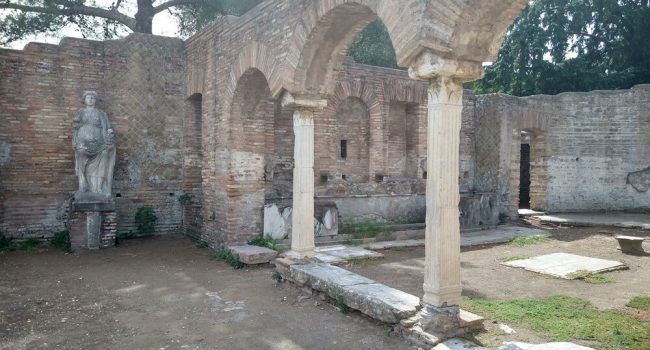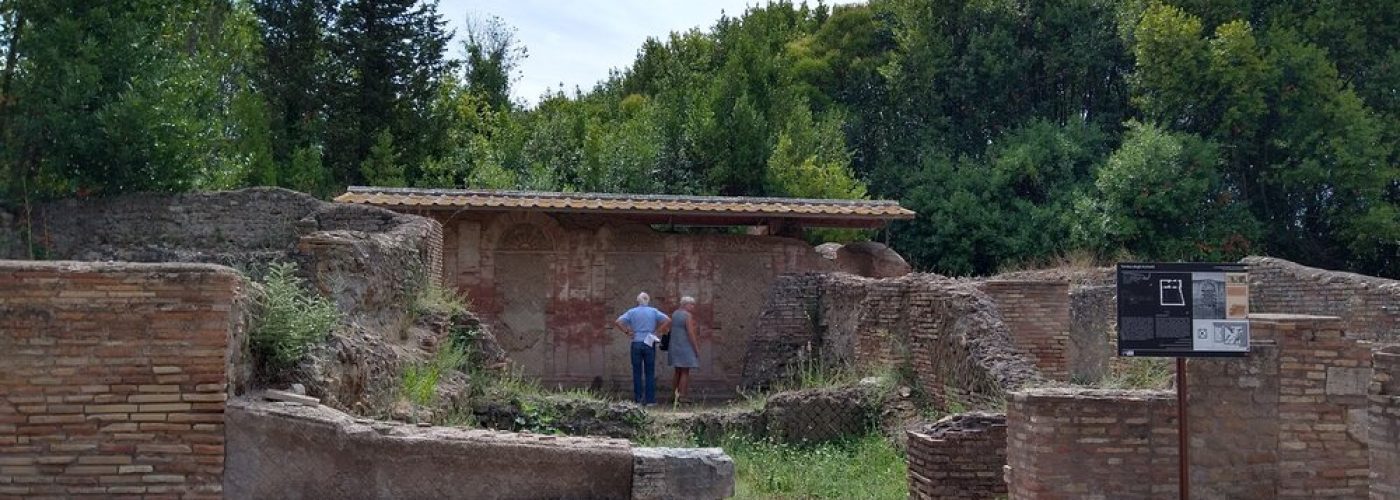Curb the crowds at the Colosseum and uncover one of Rome’s most underrated ancient sites!

For those looking to get a little off the beaten track and enjoy some time away from the hustle and bustle, one of the most memorable experiences in Rome can be found outside the city. Just a short drive (24km) from the center there lies the small, beautiful ancient town, preserved by time, which may well have been Rome’s first colony. This small port town was once Rome’s main harbour but as the city expanded its importance fell before eventually being abandoned and left for us to discover.

Origins of Ostia
‘Ostia’ derives from the latin word ‘os’ meaning ‘mouth’ and lies at the mouth of the River TIber. Ostia Antica, now situated about 3km from the modern shoreline, once acted as the seaport for Rome. There is evidence that the site had been established as far back as the 7th century BC, although most of the ancient buildings currently visible are dated to around the 3rd century BC.
While smaller than Pompeii, Ostia was provided with all of the services and amenities that a city of that time could require; including: a lighthouse, baths, public latrines, a large theatre, taverns, inns, a firefighting service, and a number of temples from a number of denominations. Interestingly, Ostia Antica is home to the Ostia Synagogue, the earliest synagogue identified in Europe. Dated to the reign of Claudius (41-54 AD), it was in use as a mainstream Jewish synagogue well into the 5th Century AD.

A Working Harbour in Ancient Rome
Ostia was established as a working harbour by which the city of Rome was supplied much of its goods. Julius Caesar oversaw developments to the town so as to better supervise the supply of grain to Rome. During the 1st century, Tiberius ordered the construction of Ostia’s first forum. At its peak, Ostia is speculated to have had some 100 000 inhabitants between the 2nd and 3rd centuries. It could be said that this seaport was a lively hub of business and commerce, populated predominantly by the working class.

A Resort for the Roman Elite - Closer than Pompeii
However, as time went on, other harbour towns began to pop up along the northern mouths of the River Tiber. By the 4th century AD, much of the mercantile activity had moved to Portus, leaving Ostia as more of a seaside resort for the rich aristocrats from Rome. Many of the working class apartment blocks had been turned into villas for the elite.
It seems that from the 6th to the 9th century Ostia experienced a gradual decline before it was ultimately abandoned after having been attacked and sacked by pirates. A final battle took place in 849 AD between the Christians and the Saracens known as ‘The Battle of Ostia’. The remaining inhabitants fled and settled in another town a short distance away.

Faded into Ruins
Ostia did not experience an abrupt death by war or natural disaster like Pompeii, but instead slowly faded away into history like a whisper in the wind. What is left now for us to explore are the ruins of a diverse and relatable working class harbour town, stories of the average man and woman and how they serviced the great city of Rome and its surrounding areas.

Walk Freely in the Ancient Site Today
After having visited Pompeii several times myself, I was astonished to discover that just half an hour from Rome I could more freely explore the luxurious villas, fantastic theater, magnificent mosaics and statues, as well as the more day to day sights like ancient baths, toilets and bakeries right here in Ostia Antica.
While Pompeii’s story is unique, Ostia is more relatable. You can walk through the fish market, explore the insides of houses, sit in the theatre, and marvel at mosaics without having to elbow your way through crowds or be restricted by barricades. You get a real sense of what life might have been like for the working class and just how fundamental this town was to the survival of Rome and its citizens.
If you don’t want to miss out on one of Rome’s most fascinating ancient sites, check out our Ostia Antica Tour offers.



Recent Comments